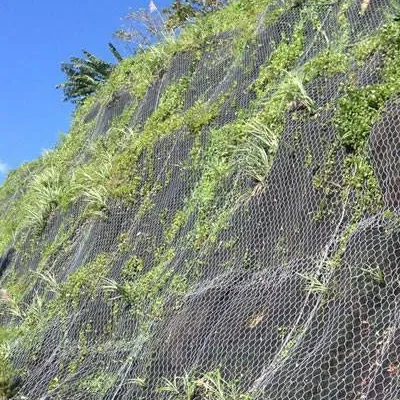-
+86 15030157877
-
sales@galvanizedmetalmesh.com
Sep . 29, 2024 21:50 Back to list
Exploring the Production Processes of Wire Netting Manufacturing Facilities
The Evolution and Importance of Wire Netting Factories
Wire netting, also known as wire mesh or wire fencing, plays an essential role in various industries, ranging from agriculture to construction. As a versatile product, it is used for safety, security, and barrier applications. The production of wire netting has evolved significantly over the years, leading to the establishment of specialized factories dedicated to its manufacture. In this article, we will explore the importance of wire netting factories, their manufacturing processes, and the advancements in technology that have enhanced their output and quality.
Historical Context
The use of wire for fencing and protective barriers dates back to ancient civilizations. However, wire netting as we recognize it began to take shape during the industrial revolution when mass production techniques were introduced. Factories specialized in producing wire netting emerged, enabling consistent quality and supply to meet the growing demands of agriculture and infrastructure development. The advent of electricity further transformed these factories, automating processes that were previously manual, which greatly improved efficiency and output.
Manufacturing Process
The typical process of producing wire netting involves several stages
1. Wire Drawing The production starts with wire drawing, where large coils of raw steel are pulled through a series of dies to create thinner strands of wire. This process increases the tensile strength and durability of the wire, making it suitable for netting.
2. Galvanization After drawing, the wire undergoes galvanization, a process where it is coated with zinc to prevent rust and corrosion. This treatment is critical, especially for products that will be exposed to the elements.
3. Weaving or Welding The prepared wire is then woven or welded into a mesh format. Weaving creates a flexible mesh suitable for various applications, while welding produces a more rigid product. The choice of method depends on the intended use of the wire netting.
4. Cutting and Packaging Once the mesh is formed, it is cut into desired sizes for different applications. The final step involves packaging the product for distribution, ensuring it reaches various markets efficiently.
wire netting factories

Technological Advancements
The wire netting industry has experienced significant technological advancements that have improved production rates and product quality. Automation plays a crucial role in wire netting factories today. Automated machines can draw, galvanize, and weave wire with minimal human intervention, reducing the chances of error and increasing output.
Moreover, modern quality control techniques ensure that finished products meet industry standards. Advanced testing methods are employed to check the strength, durability, and finish of wire netting. This rigorous quality assurance not only helps in compliance with international standards but also enhances customer satisfaction.
Another important aspect is the incorporation of sustainable practices in wire netting manufacturing. Many factories are adopting eco-friendly measures such as recycling scrap wire and using environmentally safe materials for coatings. These practices not only reduce waste but also appeal to environmentally conscious consumers.
Applications of Wire Netting
Wire netting finds applications in various sectors
- Agriculture It is commonly used for fencing livestock, protecting crops from wildlife, and creating enclosures for poultry. - Construction Wire mesh is widely used in construction as reinforcement in concrete structures, enhancing the strength and durability of buildings and pavements. - Industrial Use Factories utilize wire netting for safety barriers, storage cages, and logistics applications, providing secure environments for employees and products.
Conclusion
Wire netting factories have become integral to many industries, driven by the need for security, safety, and structural integrity. As technology continues to advance, these factories are evolving to meet consumer demands more efficiently and sustainably. The role of wire netting will only become more significant in our increasingly industrialized world, underlining the need for continued innovation and protective solutions. The future of wire netting factories looks promising, with opportunities for growth and development in an array of fields.
-
Premium Black Brick Welded Mesh - High Strength & Corrosion Resistant
NewsJul.21,2025
-
AI SEO Optimizer
NewsJul.20,2025
-
High-Quality Chicken Wire Panels Leading Manufacturer & Exporter
NewsJul.08,2025
-
High-Quality Concrete Reinforcement Wire Mesh – Reliable Steel Mesh Manufacturers & Exporters
NewsJul.08,2025
-
High-Quality Aluminum Expanded Mesh Leading Manufacturers & Exporters
NewsJul.08,2025
-
High-Quality Perforated Stainless Steel Sheet Manufacturer & Exporter Custom Sizes Available
NewsJul.07,2025



